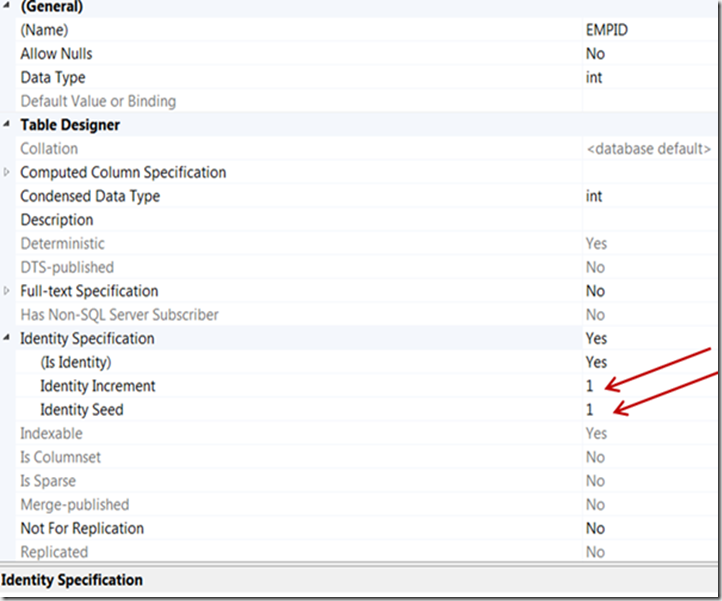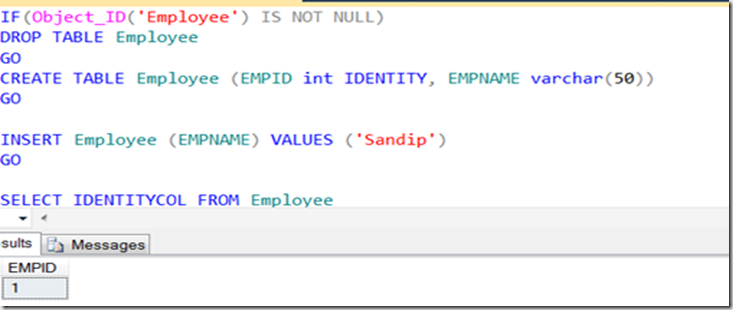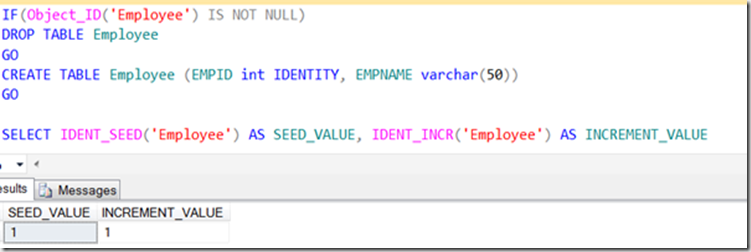In this blog series, I’m covering all about Identity property. This is the second part of this series. You can read the first part here (Part – 1).
After reading this post you will know 5 facts about Identity column.
Fact 1– By default both Identity seed and increment value will set to 1.
CREATE TABLE Employee (EMPID int IDENTITY, EMPNAME Varchar(50) GO
Run the above script and open design view of Employee table, you can find seed and increment value set to 1 for both.
Fact 2- Keyword IDENTITYCOL automatically refers to the specific column in a table that has identity property defined.
IF(Object_ID(‘Employee’) IS NOT NULL) DROP TABLE Employee GO CREATE TABLE Employee (EMPID int IDENTITY, EMPNAME varchar(50)) GO INSERT Employee (EMPNAME) VALUES (‘Sandip’) GO SELECT IDENTITYCOL FROM Employee GO
Note: If there is no column defined as Identity then querying IDENTITYCOL will throw an error.
Fact 3– Function IDENT_SEED and IDENT_INCR are used to find the seed and increment value respectively. It returns NULL if identity property not defined for a table.
Syntax: IDENT_SEED(‘Table Name’)
IF(Object_ID(‘Employee’) IS NOT NULL) DROP TABLE Employee GO CREATE TABLE Employee (EMPID int IDENTITY, EMPNAME varchar(50)) GO SELECT IDENT_SEED(‘Employee’) AS SEED_VALUE, IDENT_INCR(‘Employee’) AS INCREMENT_VALUE GO
Fact 4– Identity property can’t be defined on a nullable column.
IF(Object_ID(‘Employee’) IS NOT NULL) DROP TABLE Employee GO CREATE TABLE Employee (EMPID int IDENTITY(1,1) NULL , EMPNAME varchar(50)) GO
Fact 5– Only one identity column allowed per table
IF(Object_ID(‘Employee’) IS NOT NULL) DROP TABLE Employee GO CREATE TABLE Employee (SNO int IDENTITY(1,1) NULL,EMPID int identity(2,2), EMPNAME varchar(50)) GO





